Judy Drucker: A Miami Tribute

Judy Drucker, who passed away Monday morning at 91 due to complications from Alzheimer’s, was that rarest of things—a genuine legend. She loomed large in South Florida’s cultural orbit for nearly half a century. From her early recital series at Temple Beth Sholom in Miami Beach to the presentations of major symphony orchestras and dance companies by her Concert Association of Florida, Drucker brought some of the world’s greatest artists to Miami and Fort Lauderdale for more than four decades.
In many ways Drucker was a frustrated performer. She studied piano at the New York College of Music and voice at New York’s Juilliard School and Philadelphia’s Curtis Institute as well as the prestigious Tanglewood Music Center summer program in Lenox, Massachusetts. Drucker sang at the old Latin Quarter nightclub in Miami Beach (owned by the father of news personality Barbara Walters) as well as in the choruses of Greater Miami Opera (the forerunner of Florida Grand Opera), and The Jackie Gleason Show when it was broadcast from Miami Beach.
Drucker decided to launch a concert series in 1966 at Temple Beth Sholom where she and her family were congregants. With the support of Rabbi Leon Kronish and the temple’s board, she initially presented several concerts with local artists. (Violinists Joan Field and Bogdan Chruszcz and pianist Michele Levin played some of Drucker’s early concerts.)
In 1968 she booked a full season of recitals. The opening concert featured the recent winner of the Leventritt Competition – a young Israeli violinist named Pinchas Zukerman. As became custom with artists, she met Zukerman at the airport, showed him around town, cooked for him and did everything possible to help facilitate the performance in a warm and friendly manner. A close bond of friendship ensued as it often did with her favored guests.
The temple was far from an ideal venue. It was cavernous and, in some seating areas, there was a distinct echo when the sound hit the walls. Still the series became a mecca for top-notch artists in culture-starved Miami. Soprano Roberta Peters, mezzo-soprano Marilyn Horne, pianist Alexis Weissenberg, cellist Mstislav Rostropovich and violinist Erik Friedman, a protégé of Jascha Heifetz, were among the stellar musicians who graced Drucker’s seasons.
While still singing in the opera chorus in 1965, she met a promising Italian tenor who made his American debut in Miami in Lucia di Lammermoor. Then on the verge of his international stardom, Luciano Pavarotti would return to give one of his first American recitals for Drucker at the temple. He would come back many times for far more elaborate performances in large auditoriums, arenas and outdoor venues, one of which was televised nationally on PBS fom South Beach.
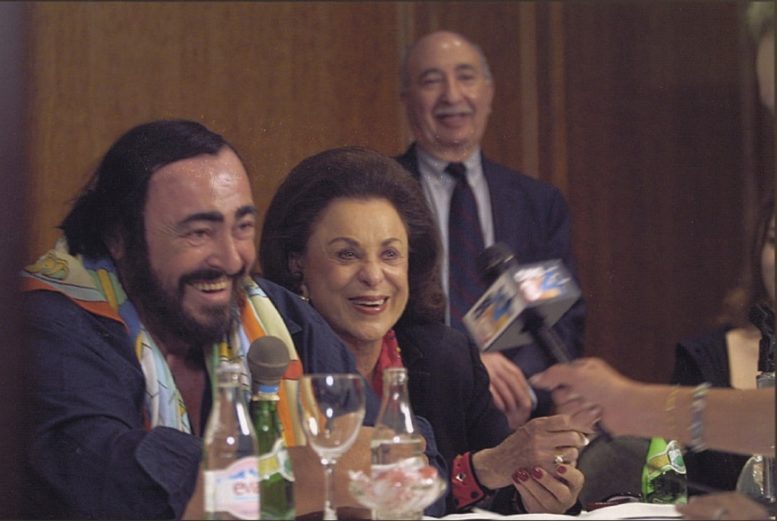
With the temple’s backing, Drucker became increasingly more ambitious in her offerings. She brought the Chamber Music Society of Lincoln Center for weeklong residencies. Longing to offer larger scale attractions, she booked Miami Beach Auditorium (now the Jackie Gleason Theater) for performances by legendary tenor Richard Tucker and baritone Robert Merrill, backed by full orchestra. In the fall of 1975, Drucker presented the first of an array of visiting orchestras. That concert by the Israel Philharmonic featured Tucker as soloist just months before his death. On the podium, a young Englishman who was a rising star in Europe but virtually unknown on this side of the pond made his South Florida debut. Andrew Davis would go on to international renown and become music director of Lyric Opera of Chicago.
Drucker’s first guest orchestra engagement led to new series at both the rechristened Theater of the Performing Arts and Miami-Dade County Auditorium. Over the years all five London orchestras appeared under Drucker’s auspices. Virtually every major American and European ensemble (with the exception of the Berlin and Vienna Philharmonics) were featured on the series, some multiple times. Long before their annual Miami residencies, the Cleveland Orchestra played repeatedly on Drucker’s series. In the bicentennial year of 1976, Leonard Bernstein and the New York Philharmonic came with an all-American program.
Solo artists were not neglected either. Itzhak Perlman, who had first appeared at the temple when he was only 24 years old, became an annual visitor. Keyboard great Rudolf Serkin gave two memorable recitals. The inimitable Vladimir Horowitz presented two recitals at his favorite 4 p.m. Sunday witching hour. Drucker paired Rostropovich with James Conlon, then a rising conductor, for superb 1976 traversals of Bloch’s Schelomo and Tchaikovsky’s Rococo Variations.
Drucker liked to create large-scale projects that would be unique to her series. Kronish read the rabbinical text in a performance of Bloch’s Sacred Service with baritone Merrill and choruses from both Temple Beth Sholom and the University of Miami under the direction of Mehli Mehta (Zubin’s father). Concert versions of opera offered glittering Met-level casts. A fiery Tosca featured Kiri Te Kanawa in the title role and an appropriately grand Aida starred Martina Arroyo, Mignon Dunn, James McCracken and Cornell MacNeil under the baton of Henry Lewis.
Dance was another of Drucker’s passions. The early 1980’s brought annual weeklong engagements by American Ballet Theater, then under the artistic direction of Mikhail Baryshnikov. During the same period, Drucker presented Arthur Mitchell’s Dance Theater of Harlem for two exciting nights. A vibrant version of Balanchine’s Serenade and John Taras’ richly classical setting of Stravinsky’s The Firebird remain etched in the memory. The Alvin Ailey American Dance Theater became a regular visitor. Choreographer Elliot Feld brought his company for two evenings of classical and folk-pop influenced dance.
___________
With Kronish’s retirement as Temple Beth Sholom’s chief rabbi in the early 1980’s and Drucker’s desire to present even more performances each season, she decided to form an independent organization. After a trip to Washington, D.C. to study the successful Washington Performing Arts Society, the Concert Association of Florida was born.
For over two decades it would present major concert and dance attractions. With the opening of the Broward Center, Drucker initiated a Fort Lauderdale series in 1991. Much of her audience had moved further north and she found an eager public at the glistening new Broward venue. Her first concert (the mediocre Prague Symphony) was unremarkable yet the audience cheered to the rafters and Drucker had filled a void in Broward County.
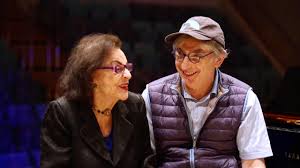
The early offerings of the Concert Association were impressive indeed. A two-night Mahler Festival offered the superb Chicago Symphony Orchestra under Sir Georg Solti in the Symphony No. 1; then under Claudio Abbado with a searing reading of the dark Symphony No. 6. The Orchestre de Paris under Semyon Bychkov came for a three-night feast of Berlioz, Debussy and Ravel. The gleaming vocalism of soprano Eva Marton graced a Wagner-Puccini evening with veteran opera maestro Julius Rudel leading the Florida Philharmonic Orchestra. As the final decade of the 20th century beckoned, Drucker brought Miami audiences two young Russian keyboard virtuosos on their first American tours—Evgeny Kissin and Arcadi Volodos. Senior piano dynamo Shura Cherkassky made one of his rare American recital appearances.
An introductory speech from the stage was invariably a certainty at a Drucker concert, and she very enjoyed these turns in the spotlight, creating and cementing her own public persona in the process.
Drucker was a whiz at replacing artists who cancelled at the eleventh hour. When Marilyn Horne called in sick from New York the morning of a scheduled concert, Drucker arranged for Jose Carreras to replace her. Carreras got on a plane to Miami and improvised a wonderful recital with Horne’s veteran accompanist Martin Katz, melting an initially cold audience. In the 1980’s Montserrat Caballé frequently cancelled performances due to illness. When Drucker found out she was not coming three days before her scheduled appearance, she brought Shirley Verrett for an evening of great Verdi singing under Conlon’s baton. In what turned out to be her final season at the Concert Association, Russian soprano Maria Guleghina became ill after the first performance of a two night run of a concert version of Verdi’s Il Trovatore. Drucker scored a major coup by engaging Sondra Radvanovsky, a leading international Verdi soprano, and Radvanovsky and colleagues delivered the goods.
___________
To be sure Drucker had her share of less than stellar evenings. Even with its historic value, the 1974 concert by Maria Callas and Giuseppe De Stefano marked her all-time personal ow. In a program lasting less than an hour, the tenor bellowed at the top of his lungs while Callas could no longer sing on pitch or reach her high notes—a sad end for one of the century’s greatest and most unique artists. Drucker actively promoted violin prodigy Lilit Gampel who gave a dull, colorless performance and, shortly thereafter, disappeared from the concert world. At Pavarotti’s final Miami recital, the tenor’s constricted sound and wavering pitch displayed the declining vocal resources of a once great star.
Drucker also became increasingly conservative in her programming as the years passed. Touring orchestras were encouraged to play only familiar symphonies and concertos of Beethoven, Brahms, Tchaikovsky and Rachmaninoff. It took strong-willed conductors to stand up to Drucker’s demands for safe programs. Esa-Pekka Salonen, Leon Botstein and Vladimir Jurowski were among the few who did.
For years, Drucker’s concerts took place in auditoriums with poor acoustics. Her impressive array of visiting attractions was one of the moving factors behind the planning and construction of the Arsht Center.
Yet for all the charm and persuasion she displayed with artists and music journalists Drucker was definitely a split personality with a darker side. While she was frequently amiable in public, she could become abrasive, testy and insulting with patrons and board members. Some major contributors left the Concert Association after dustups with Drucker.
She also had recurrent problems staying within an allotted budget. Following the Concert Association’s first season at the Arsht Center in 2007, she was ousted by the organization’s board. Drucker’s successors—executive director Al Milano and artistic director Rise Kern—scheduled weak pops-oriented programming with mostly local artists and freelance orchestras that did not come within miles of the standards Drucker had set. Not surprisingly, their events failed to attract an audience that Drucker had led to expect first-class artists. Within a year the Concert Association was disbanded.

Judy Drucker (with niece Rachelle Nelson) at her 50th anniversary tribute concert in 2017 at Temple Israel.
Undaunted and indefatigable in spirit, Drucker managed a more-than-respectable third act. She joined Florida Grand Opera as artistic consultant and produced a season of three concerts with star turns by Dmitri Hvorostovsky, Marcello Giordani and Bryn Terfel, each with full orchestra and a soprano partner to sing duets. When the series did not produce the kind of box office expected, FGO executive director Robert Heuer was unwilling to put additional resources behind the series and, eventually, jettisoned Drucker.
After a brief, abortive attempt to revive the Concert Association, Drucker founded her own Great Artist Series. Initially several planned concerts were cancelled but there was an anticipatory, supercharged atmosphere in the audience at Miami Beach’s New World Center on the evening of March 27, 2012 and Drucker received a prolonged ovation when she took the stage for her introductory remarks. Zukerman, who donated his services for the evening, was joined by his wife, cellist Amanda Forsyth and pianist Angela Cheng for an exciting program of duos and trios.
Over the next two seasons Drucker produced concerts by Kissin, Hvorostovsky and soprano Ana Maria Martínez. (Kissin’s performance of Samuel Barber’s fiendishly difficult Piano Sonata was particularly notable.) Despite her determination to continue, failing health brought an end to Drucker’s series. In her last years, she suffered from advanced dementia and retired to the Miami Jewish Home for the Aged, where she died on Monday.
__________
Over more than four decades, Judy Drucker established a rich cultural legacy in South Florida. Drucker was responsible for some of the area’s most memorable evenings of music and dance. With her strong artistic instincts and eye for talent, Drucker’s presentations were frequently the “must-see events” of the season.
As performing arts centers took root in South Florida, the presentation of visiting soloists and orchestras was taken over by their programming and marketing departments, leaving little room for independent producers like Drucker. With her determination and adherence to strong artistic values, Judy Drucker made musical history in South Florida. We will not see her like again.
“Judy was a force to be reckoned with,” said Doreen Marx who worked for Drucker before starting her own Sunday Afternoons of Music series, which ran for 32 years.
“She had drive, ambition and enthusiasm, but also a big heart.”
Posted in Articles
5 Responses to “Judy Drucker: A Miami Tribute”
Leave a Comment
Mon Mar 30, 2020
at 5:31 pm
5 Comments
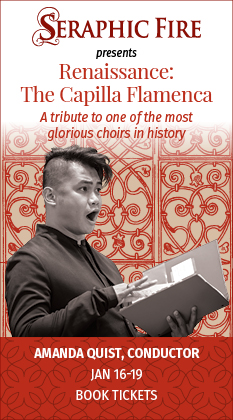


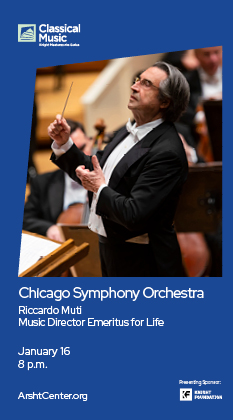
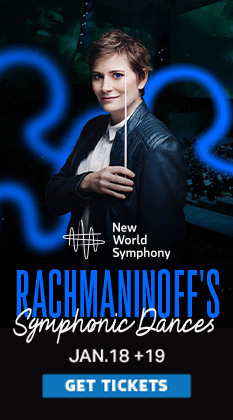

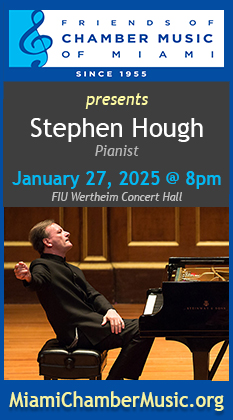
Posted Mar 30, 2020 at 7:12 pm by Rhoda Levitt
Thank you Judy Drucker for being a music maven and a pioneer presenter of outstanding musical culture. Judy created seasons of brilliant performances in South Florida, changing the perception of this community, once called Paradise Lost, to now be recognized as a destination to enjoy entertaining cultural richness.
Posted Mar 31, 2020 at 3:13 pm by Arlene Hathaway
As always, Larry has written a brilliant tribute to our beloved Judy, who gave Miami everything she had to bring the best to our city — now she is reunited with her beloved Dima in heaven….God bless you Judy.
Posted Apr 03, 2020 at 1:54 pm by Michele Wade
Thank you ,for being that extraordinary person you have always been; so glad to have known you for so long and can truly say you will never be forgotten. Farewell unforgettable Judy..
Posted Jun 10, 2020 at 3:45 pm by Pedro A. Romanach
Thank you so much, Judy, for bringing so many wonderful artists to South Florida! We owe you so much. You brought so much joy into our lives through your concerts, recitals, ballets, etc. You will never be forgotten. You will definitely be missed.
Posted Apr 23, 2021 at 2:48 pm by Juan
This wonderful lady brought culture to my thirsty ears in my early days in Miami. God bless her.